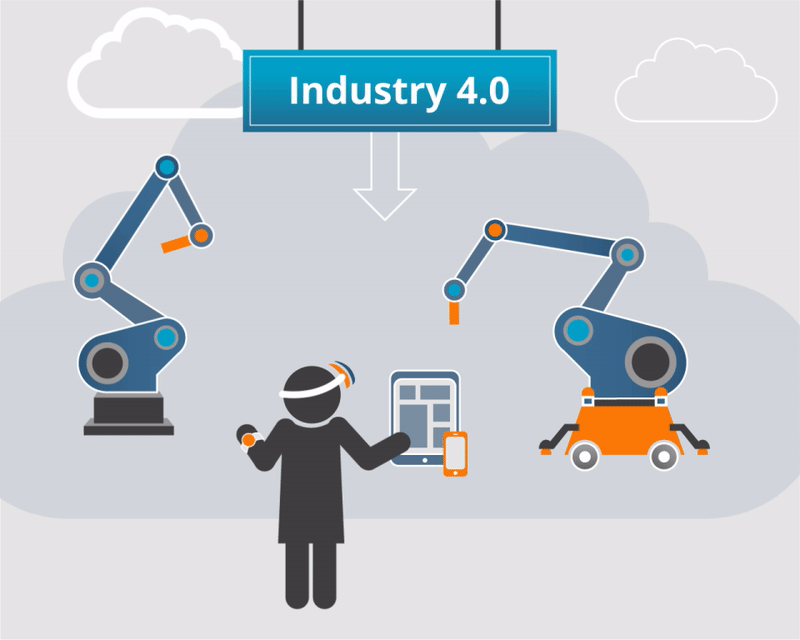COURSE OBJECTIVES
➢ To enable students understand the fundamentals and the contributing technologies of Industry 4.0.
➢ To make the students evaluate the suitability of Industry 4.0 technologies for the design and manufacturing sectors.
➢ To help the students implement the Industry 4.0 technologies to diverse applications.
UNIT 1 CONTRIBUTING TECHNOLOGIES 8 hrs
Brief introduction to the industrial revolutions. Contributing technologies to Industry 4.0: Additive manufacturing, Digital twin, Internet of things, Smart sensors, AR and VR, Artificial intelligence, Cloud computing, Block chain, Big data and analytics. Challenges and opportunities.
UNIT 2 ADVANCED CAD TECHNOLOGIES 8 hrs
Introduction to CAD. Enabling technologies: Digital twin, AR/VR, AI. Cloud computing, Touch/Voice/Motion enabled CAD, Customized CAD, Cloud based CAD, Digital twin and live simulation.
UNIT 3 SMART MANUFACTURING SYSTEMS 8 hrs
Enabling technologies: AI, Cloud computing, Robotics, IoT. Digital manufacturing: CNC, Cloud based manufacturing, IoT based manufacturing, Advanced CNC programming. Additive manufacturing. Micro electro mechanical systems. Robotics: Robotic automation, Collaborative robots, Autonomous robots, Swarm robots, and Modular robots.
UNIT 4 SMART FACTORY ENABLERS 8 hrs
Enabling technologies. Smart energy: Improving energy efficiency with data, Smart grids. Clean energy. Smart logistics. Smart Inspection. Smart decision making.
UNIT 5 AUTOMOMOUS VEHICLES 8 hrs
Introduction: Traditional mobility versus autonomous driving, Levels of automation, and challenges. Enabling technologies. Self-propelled vehicles, Drones, Unmanned aerial vehicles, Space crafts
UNIT 6 CASE STUDIES 5 hrs
Case studies related to Industry 4.0 applications, such as, transportation, energy, infrastructure, manufacturing, and product design sectors.
Max. 45 Hrs.
COURSE OUTCOMES
At the end of the course, the students will be able to:
CO1: Justify how the digitalization technologies are advantageous to the design and manufacturing industries.
CO2: Use the advanced CAD technologies to create the CAD models.
CO3: Use the smart manufacturing technologies to produce the components and products.
CO4: Recommend the enabling technologies to make various factory operations smarter.
CO5: Choose the suitable sensors and technologies to the future autonomous vehicles, drones and space crafts.
CO6: Prepare a report with the challenges faced currently, the enabling technologies to become smarter, and the
steps needed for the effective implementation for the given case study.
TEXT / REFERENCE BOOKS
1. Flavio Craveiro, Jose Pinto Duarte, Helena Bartolo and Paulo Jorge Bartolo, “Additive manufacturing as an enabling technology for digital construction: A perspective on Construction 4.0”, Automation in Construction, Vol. 103,pp. 251- 267, 2019.
2. Klaus Schwab, “Fourth Industrial Revolution”, Random House USA Inc, New York, USA, 2017.
3. Oliver Grunow, ”Smart Factory and Industry 4.0. The current state of Application Technologies”, Studylab Publications, 2016
4. Alasdair Gilchrist, “Industry 4.0: Industrial Internet of Things”, Apress, 2016
5. Sang C. Suh, U. John Tanik, John N Carbone, Abdullah Eroglu, “Applied Cyber-Physical Systems”, Springer Publications, New York, 2013.

- Teacher: Madhan Kumar G
